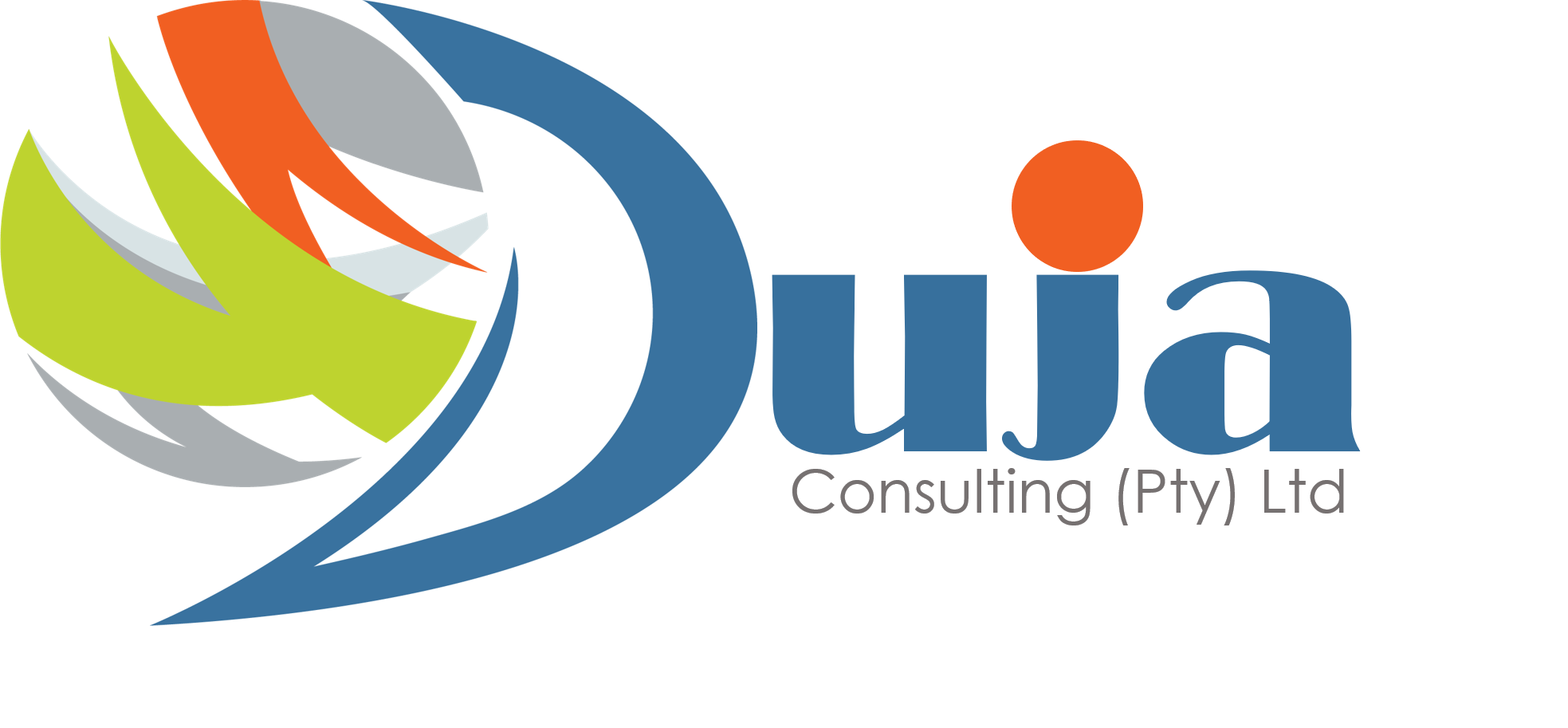Partnering with SETAs for Effective Learnership Delivery in South Africa
The piece explores how employers, training providers, and SETAs can work together to design, fund, and deliver learnerships that drive measurable skills outcomes. It also outlines governance models, risk management strategies, and inclusion practices for stronger absorption and ROI.
Partnering with SETAs shouldn’t be a compliance exercise — it’s a strategic advantage. Our latest paper, “Partnering with SETAs for Effective Learnership Delivery in South Africa”, explores how employers can turn levies and grants into powerful skills pipelines.
Discover how to:
- Align learnerships with business demand and sector skills plans
- Secure SETA funding and ensure quality accreditation
- Build robust governance, mentorship, and absorption pathways
- Measure outcomes that matter: competence, retention, and ROI
When SETAs and employers collaborate effectively, learnerships become engines of growth — not admin burdens.

Executive Summary
Learnerships remain one of the most practical pathways for building scarce and critical skills in South Africa while improving employability and inclusion. Yet many programmes underperform: learners are recruited late, logbooks are incomplete, providers struggle with accreditation or assessment schedules, and employers lose patience with complex grant requirements. Sector Education and Training Authorities (SETAs) were created to bridge these gaps; when employers and training partners work with SETAs proactively—not merely for compliance—learnerships can become engines of productivity, social mobility, and measurable return on skills investment.
This paper sets out a pragmatic blueprint for partnering with SETAs to design, fund, deliver, and quality-assure learnerships that work. We cover the end-to-end lifecycle: strategic alignment to workforce plans; funding and incentives; provider and assessment readiness; workplace placement and mentorship; quality management and compliance; and post-programme absorption. We include practical tools—an operating rhythm, governance model, risk narrative, success metrics, and data practices—to reduce friction and raise programme completion, competence, and employment outcomes.
Duja Consulting’s stance is straightforward: treat SETAs as a strategic ally in workforce transformation. Engage early and often, align to sector skills priorities, and run learnerships with the same operational discipline you expect from core business processes. The result is a repeatable capability to convert levies and grants into high-value skills pipelines.
1) Why Learnerships—and Why the SETA Partnership Matters
Learnerships combine formal, credit-bearing learning with structured workplace experience toward an occupational qualification.
When well executed, they:
- Build role-ready capability in priority and scarce skills areas.
- Widen access to the economy for youth, people with disabilities, and career-changers.
- Improve retention by linking learning to real work and progression pathways.
- Unlock funding through discretionary grants and enhance Skills Development scorecard performance.
- Support national priorities by responding to sectoral skills plans.
The SETA role is pivotal: they translate national human capital strategy into sector priority lists, quality assure learning, accredit providers and workplaces, and administer grant funding. Too often, organisations treat SETAs as paperwork gatekeepers. A better posture is co-design: use the SETA to pressure-test demand signals, validate curricula relevance, accelerate accreditation logistics, and coordinate external assessment or trade testing.
2) Strategic Foundations: Start with Real Business Demand
2.1 Workforce and skills strategy
Begin with a quantified view of skills demand: attrition, growth, automation risk, technology change, and regulation. Map critical roles to competencies and determine which are best built via learnerships (for example, roles with substantial practical components and recognised occupational standards).
2.2 Link to the Sector Skills Plan
Cross-reference your internal needs with the relevant SETA’s Sector Skills Plan and priority occupations. This alignment strengthens discretionary grant applications and ensures your programme produces skills the sector endorses.
2.3 Define learner personas and equity goals
Cross-reference your internal needs with the relevant SETA’s Sector Skills Plan and priority occupations. This alignment strengthens discretionary grant applications and ensures your programme produces skills the sector endorses.
3) Funding and Incentives: Build a Smart Financing Stack
3.1 Levies and mandatory grants
Ensure timely submission of your Workplace Skills Plan (WSP) and Annual Training Report (ATR). This sustains access to the mandatory grant component and signals organisational reliability—a factor that supports later discretionary grant applications.
3.2 Discretionary grants and PIVOTAL programmes
Design PIVOTAL (Professional, Vocational, Technical and Academic Learning) programmes that emphasise occupational qualifications and real placements. Submit applications early with robust evidence: demand rationale, provider readiness, workplace capacity, and learner support.
3.3 Tax allowances and scorecard considerations
Learnership tax allowances and Skills Development scorecard elements can materially improve the business case. While specific values change from time to time, the consistent principle is to integrate fiscal benefits into your return model without letting them become the sole purpose of the programme. Your investment case should rest on productivity, pipeline strength, and retention.
3.4 Co-funding models
Where budgets are tight, explore cost-sharing: SETA discretionary grants for stipends and assessment fees; employer spend on mentorship and supervision; and provider contributions via bundled services. Transparent co-funding frameworks reduce later disputes.
4) Quality and Compliance: Design for Approval from Day One
4.1 Accreditation ecosystem
Partner only with providers who hold valid accreditation for the targeted qualifications and can demonstrate consistent audit success. Confirm assessor and moderator registrations, recognition of prior learning capabilities, and experience with external integrated summative assessments where applicable.
4.2 Workplace approval and mentorship
Secure SETA workplace approval early with evidence that learners will be exposed to the full range of tasks required for competence. Appoint trained mentors with time to coach. Mentor-to-learner ratios should be realistic—this is one of the strongest predictors of completion.
4.3 Learning materials and logbooks
Insist on occupationally relevant learning materials and robust logbooks that capture evidence of practical tasks. Digital logbooks reduce loss, ease quality reviews, and help mentors track progress in real time.
4.4 Data protection and ethics
Comply with data privacy and fairness standards across recruitment, selection, assessment, and reporting. Protect learner dignity in communications and performance tracking. Ethical practices build trust with both SETA and communities.Insist on occupationally relevant learning materials and robust logbooks that capture evidence of practical tasks. Digital logbooks reduce loss, ease quality reviews, and help mentors track progress in real time.
5) Programme Architecture: From Recruitment to Absorption
5.1 Learner recruitment and readiness
Recruit against clear competence baselines. Use realistic job previews and basic aptitude screening to reduce attrition. Provide pre-programme orientation covering workplace behaviour, attendance, stipend rules, and grievance processes.
5.2 Delivery model and cadence
Alternate classroom and workplace blocks to maintain momentum, or embed weekly release days if operations allow. Publish a 12-month master schedule showing teaching weeks, workplace rotations, formative assessments, external assessments, and moderation windows. Share this with SETA officials at the outset.
5.3 Assessment strategy
Link formative assessments directly to tasks learners will perform at work. Moderate early samples to surface issues before they scale. For external assessments, confirm booking lead times and capacity; plan back from those dates to keep cohorts on track
5.4 Holistic support
Provide travel assistance where needed, psychosocial support, and structured mentorship check-ins. If your cohort includes people with disabilities, ensure reasonable accommodation (assistive tech, accessible transport, adapted assessment). These supports pay for themselves in completion rates.
5.4 Holistic support
Define success as competence and employment. Secure hiring commitments from host sites, create bridging modules for role-specific gaps, and publish progression maps into permanent roles or further learning. Track absorption for at least 12 months post-completion.
6) Operating Rhythm and Governance That Keep Everyone Aligned
6.1 Steering and delivery forums
Establish a two-tier governance model:
- SteerCo (monthly): Employer sponsor, HR/Skills lead, provider principal, and SETA relationship manager. Focus on funding drawdown, risk removal, and policy changes.
- Delivery Forum (fortnightly): Project manager, lead facilitator, assessor representative, workplace mentors, and admin. Focus on attendance, logbooks, formative progress, and moderation readiness.
6.2 Visual management
Maintain a single “execution room” dashboard—physical or digital—showing learner pipeline, attendance heatmaps, assessment completion, mentor check-ins, grant claims status, and audit actions. Green/amber/red flags make issues visible early.
6.3 Documentation discipline
Treat evidence files as production assets, not afterthoughts. Standardise file structures, naming conventions, and version control. Conduct internal audits quarterly to pre-empt accreditation or SETA compliance reviews.
6.4 Continuous improvement
Use retrospectives after each block: what helped learning transfer, what blocked workplace exposure, which modules ran over time, how many re-assessments were needed. Share changes with SETA stakeholders so they understand your drive for quality.
7) Data and Decision Intelligence: Measure What Matters
7.1 Leading and lagging indicators
Track both activity and outcomes:
- Leading indicators: attendance, punctuality, mentor contact minutes, formative pass rates, logbook task coverage, and on-time moderation.
- Lagging indicators: completion rate, competence achievement, external assessment pass rate, absorption rate, 6- and 12-month retention, time-to-productivity, and supervisor quality ratings.
7.2 ROI narrative
Combine financials (grant receipts, tax allowances, reduced recruitment cost, lower overtime) with operational gains (throughput, quality, safety, customer metrics) to tell an integrated value story. Compare cohorts with non-learnership hires to quantify the difference.
7.3 Evidence for audits and grants
Use a digital repository that links each learner’s evidence trail to SETA reporting requirements. This improves claim accuracy, reduces back-and-forth, and accelerates tranche payments.
8) Working with SETAs: Practical Engagement Tactics
8.1 Relationship map
Identify key roles: SETA client liaison, grants officer, accreditation officer, quality assurance lead, and external assessment coordinator. Know who to contact for what, and keep interactions constructive and timely.
8.2 Early technical consultations
Identify key roles: SETA client liaison, grants officer, accreditation officer, quality assurance lead, and external assessment coordinator. Know who to contact for what, and keep interactions constructive and timely.
8.3 Submission excellence
Grant and accreditation submissions must be error-free, with all supporting documents complete and consistent. Create checklists for every submission type and conduct peer reviews before lodging.
8.4 Proactive problem-solving
When issues arise—provider capacity, mentor availability, attendance dips—inform the SETA quickly with a corrective action plan. A record of transparency improves confidence and accelerates approvals.
8.5 Policy awareness
Keep abreast of updates to qualifications, external assessment modalities, and quality assurance requirements. The skills ecosystem continues to evolve; anticipating change protects delivery continuity.When issues arise—provider capacity, mentor availability, attendance dips—inform the SETA quickly with a corrective action plan. A record of transparency improves confidence and accelerates approvals.
9) Managing Risk: A Targeted Narrative
Grant application decline
One of the earliest risks is a discretionary grant application that fails to convince. Early warning signs include SETA queries about alignment to the Sector Skills Plan or priority occupations. Mitigation rests on evidence. Re-frame the application around verified labour-market demand, demonstrate a clear workplace pipeline, and tighten the outcomes logic (competence, absorption, and progression). If timing is the issue, schedule resubmission for the next window with upgraded attachments—letters of intent from host sites, mentor rosters, and an assessment calendar.
Accreditation and assessor/moderator gaps.
One of the earliest risks is a discretionary grant application that fails to convince. Early warning signs include SETA queries about alignment to the Sector Skills Plan or priority occupations. Mitigation rests on evidence. Re-frame the application around verified labour-market demand, demonstrate a clear workplace pipeline, and tighten the outcomes logic (competence, absorption, and progression). If timing is the issue, schedule resubmission for the next window with upgraded attachments—letters of intent from host sites, mentor rosters, and an assessment calendar.
Insufficient workplace exposure.
Learners who repeat narrow tasks cannot credibly evidence competence. The signal is a logbook that shows a small cluster of activities performed over and over. Remedy this by designing an exposure matrix at the outset, rotating learners across processes, and briefing mentors on their responsibility to create task variety. Conduct mid-programme spot checks to confirm that practical tasks match the curriculum’s breadth.
Rising learner attrition.
Attrition typically spikes in the first eight weeks and can be detected through absenteeism patterns, late arrivals, or incomplete formative tasks. Address root causes early: reinforce orientation messages; troubleshoot transport reliability; schedule frequent mentor check-ins; and provide psychosocial support where needed. Targeted interventions during this window often halve later drop-offs.
Assessment and moderation bottlenecks.
Backlogs build when formative assessments are left to the end or moderation is sporadic. The symptom is a swelling queue of unmoderated POEs (portfolios of evidence) and slipping claim dates. Counter this with weekly assessment sprints, early sampling for moderation, and a visible “ageing” report on outstanding evidence. Align assessor capacity to the cohort size and lock moderation dates in the master schedule.
Delayed grant claims.
Claims stall when evidence files are incomplete or signatures are missing. The tell-tale sign is repeated SETA queries after submission. Pre-empt this through internal pre-audits, standardised file structures, and digital logbooks that capture evidence at source. Train admin staff on common claim failure modes and run a readiness checklist before every submission.
External assessment capacity constraints.
In qualifications requiring external summative assessment or trade testing, limited booking slots can derail timelines. Book early and, for large intakes, split cohorts across dates. Run mock assessments to raise first-time pass rates and keep a contingency plan with alternate sites. Escalate early through your SETA relationship manager if systemic capacity issues arise.
10) Inclusion by Design
10.1 Disability inclusion
Design the full journey with reasonable accommodation in mind—venues, technology, assessment adaptations, and mentor training. Partner with specialist organisations where necessary.
10.2 Rural and peri-urban cohorts
Budget for transport and secure local workplaces. Use blended delivery with planned face-to-face intensives and remote support to reduce travel burden.
10.3 Language and support
Offer learning aids in accessible language, with study groups and peer mentors. Psychological safety and dignity are not “nice to haves”; they drive competence and completion.
11) The Delivery Blueprint (Step-by-Step)
- Discovery – Validate demand, map to Sector Skills Plan, define learner personas, and confirm the business case.
- Design – Select qualification, build curriculum and workplace exposure plan, draft assessment strategy, and confirm provider/assessor capacity.
- Engage the SETA – Conduct pre-submission consultations; incorporate feedback.
- Secure Funding – Submit discretionary grant application; confirm co-funding; diarise claim milestones.
- Ready the Workplace – Obtain workplace approval, appoint mentors, train supervisors, and publish rotations.
- Recruit Learners – Run equitable selection; deliver orientation and life-skills readiness.
- Launch – Commence learning with a clear operating rhythm and dashboard.
- Assess & Moderate – Integrate formative assessments with workplace tasks; moderate early and often.
- External Assessment – Book and prepare; run mock assessments; support logistics.
- Absorb – Transition competent learners into roles; provide bridging modules and onboarding.
- Report & Claim – Maintain evidence packs; submit claims on schedule.
- Review & Improve – Conduct post-mortems with the SETA; refine for the next cohort.
12) Case Vignette (Composite)
A mid-sized manufacturing firm struggled with technician vacancies and rising overtime. Duja Consulting aligned their workforce plan to the sector’s priority occupations and designed a 12-month learnership aligned to a relevant occupational qualification. We convened an early technical session with the SETA, secured discretionary funding, and supported workplace approval for three production sites. A digital logbook linked tasks to evidence and fed a live dashboard used in fortnightly delivery forums. We trained twenty mentors, ran early moderation checks, and booked external assessments four months ahead. Completion and competence exceeded prior baselines; eighty percent of learners were absorbed into permanent roles within three months, and overtime spend fell materially in the next quarter. The SETA relationship strengthened through transparent reporting and timely claims.
13) What “Good” Looks Like: Benchmarks and Signals
- >90% logbook task coverage by mid-programme.
- ≥85% on-time formative assessment completion with moderation sign-off.
- ≥80% external assessment pass first time (where applicable).
- ≥70% absorption within three months of completion; ≥60% retained at 12 months.
- Documented process improvements adopted in the next cohort.
- Zero major findings in SETA quality audits.
These are indicative; the right targets depend on sector, qualification, and learner profile. The point is to set clear goals, measure relentlessly, and act on what the data says.
14) Common Pitfalls—and How to Avoid Them
- Late SETA engagement: Treat SETA as co-designer, not after-the-fact approver.
- Over-ambitious intake: Better to start smaller with high quality and scale gradually.
- Weak mentorship capacity: Protect mentor time; make it visible in rosters and KPIs.
- Paper logbooks: Move to digital to avoid loss, speed moderation, and strengthen claims.
- Assessment drift: Schedule weekly assessment blocks; never “save it all for the end”.
- Claims chaos: Run pre-audits; ensure signatures and evidence are complete before submission.
- No absorption plan: Secure host-to-hire pathways and budget for bridging training.
15) The Role of Duja Consulting
Duja Consulting supports employers and providers across the entire learnership lifecycle:
- Strategy and design: Workforce planning, alignment to sector priorities, and business case build.
- Funding enablement: Grant application writing, submission management, and claim readiness.
- Quality and compliance: Accreditation support, workplace approval, assessment moderation, and internal audits.
- Delivery management: Programme PMO, execution dashboards, mentor training, and risk removal.
- Inclusion and support: Disability inclusion planning, psychosocial support frameworks, and learner readiness.
- Absorption and ROI: Hire-ready pipelines, progression mapping, and value tracking.
Our practice is practical: clear operating rhythms, clean submissions, evidence-rich reporting, and a relentless focus on competence and employment outcomes.
Conclusion
When done well, learnerships are more than training—they are structured pipelines that convert raw potential into productive capacity. The difference between frustration and success often lies in the quality of the SETA partnership and the discipline of execution. Engage early, align to sector priorities, and run your programme with operational rigour. Fund intelligently, measure what matters, and treat evidence as a first-class asset. Prioritise mentorship, inclusion, and absorption so that learning translates into work and dignity.
Duja Consulting’s invitation is simple: let’s turn levies and grants into skills that move your business. We will help you build a learnership engine—SETAs included—that delivers competence, employment, and measurable return on skills investment, cohort after cohort.
To explore how this approach can be tailored to your organisation, connect with Duja Consulting. We’ll co-design a learnership portfolio that meets your skills demand, secures funding, and delivers results you can trust.


